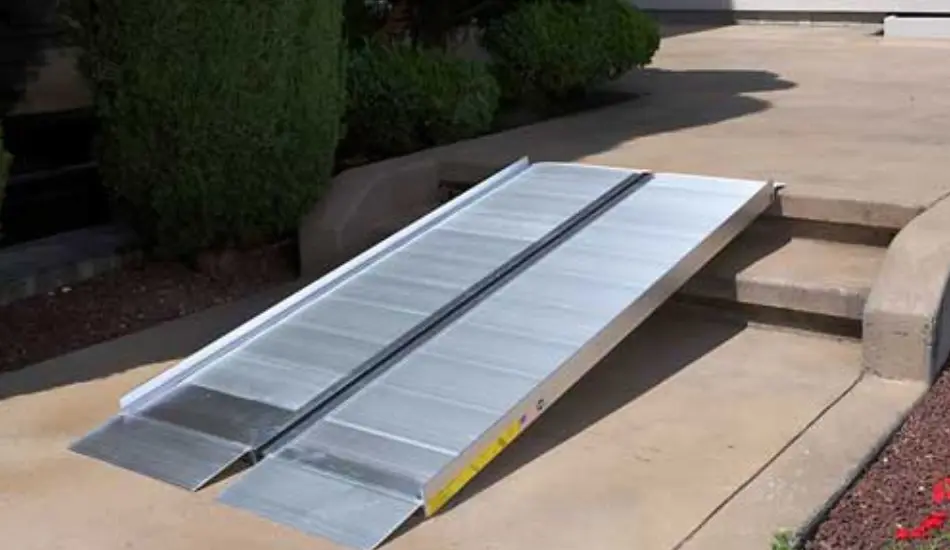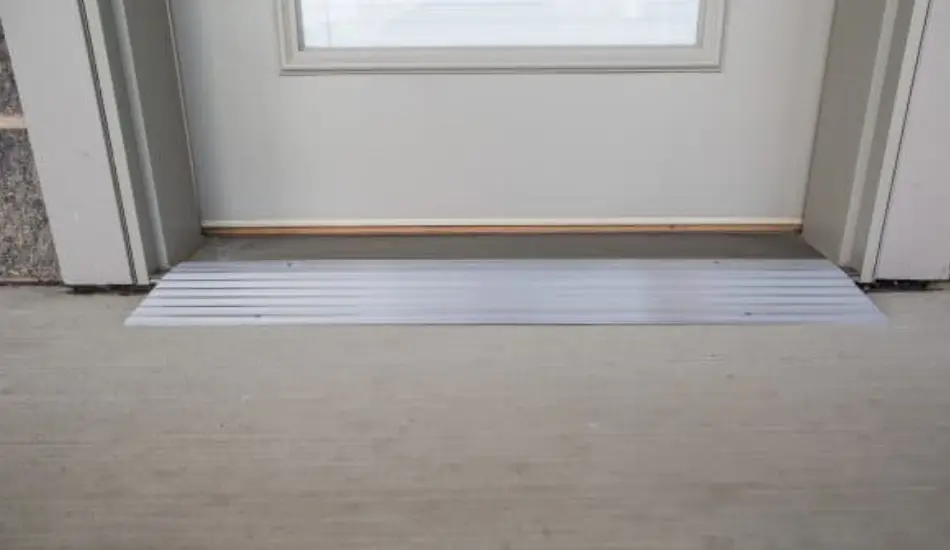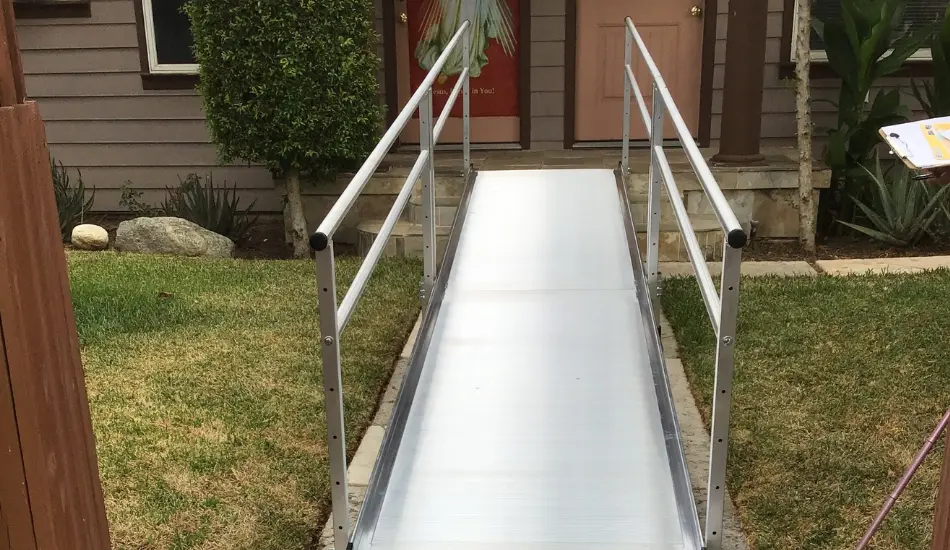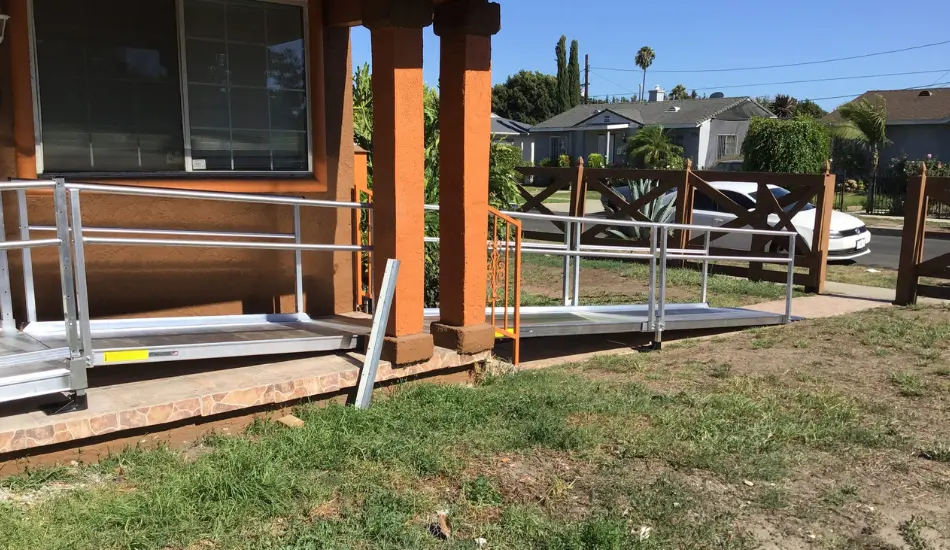Wheelchair ramps are highly essential assistive tools that make life a lot easier for people who use wheelchairs and the ones who care for them. These are inclined planes installed in places instead of or in addition to stairs. The likes of ramps are numerous, which may be confusing. Our guide to choosing the right wheelchair ramp will help you sort it out. It will cover the various types of ramps, things to look at while choosing one, and professional advice. Let’s find out more about wheelchair ramps so you can select the ideal one.
Things to Consider When Choosing the Right Wheelchair Ramp
Finding the right wheelchair ramp involves a combination of understanding your immediate needs and anticipating future requirements. Factors such as the ramp’s size, type, weight capacity, location, budget, portability, and maintenance needs all play crucial roles in determining the best fit for your situation.
-
Size of the Ramp
The longer your ramp, the higher the expense. Wheelchair ramps typically cost between $50 and $250 per linear foot. This cost is especially high when building a ramp that complies with the Americans with Disabilities Act (ADA), which requires ramps to be no taller than one inch for every foot of length. The ADA requires a wheelchair ramp to be 36 inches wide by 60 inches long. However, customization is possible to allow accessible designs.
-
Types of the Ramp
There are various types of wheelchair ramps available, each with its own advantages and suitability for different environments and user needs. Here are some common ramps:
-
Portable Ramps

Portable wheelchair ramps are simple ramps that you can take with you anywhere and are easily customizable to the conditions of different locations. They are easy to fold and store, and most manufacturers provide a variety of sizes. Portable wheelchair ramps are often more affordable than other choices. Some portable ramps can even be installed directly on top of stairs for convenient access on the go.
Even if you already have a ramp placed in your home or workplace, it’s always a good idea to invest in a high-quality portable ramp to help prepare for any unexpected challenges you may encounter when traveling. It may be a good idea to carry a portable wheelchair ramp at all times. Especially if you drive several vehicles.
However, these are rarely ADA-compliant. This is because you can’t always manage the slope, and they don’t have handrails. As a result, they are not suitable for use in a commercial environment.
-
Threshold ramp

Threshold ramps are often built of strong materials like aluminum, steel, or rubber and are intended to fit tightly against the threshold of a door or curb. Depending on the application, the ramp height can range from one to six inches. Allowing for a seamless transition from one surface level to another. To ensure long-term use, an outdoor ramp should be weatherproof and corrosion-resistant. Furthermore, threshold ramps can be tailored to the exact size. Also, the shape of the door or curb they are used on ensures a smooth, safe transition.
-
Modular Ramp

If you want a more permanent solution, a modular ramp is the best alternative. They come in a variety of sizes and styles, assuring a perfect fit for every doorway or staircase. Modular wheelchair ramps are an excellent mobility solution for wheelchair users, allowing them to access buildings, decks, porches, and other previously inaccessible areas. These ramps are wider than ordinary ramps and may be tailored to fit any location. Furthermore, modular ramps are ADA-compliant, ensuring that anyone who visits your home or a public location can easily access it. Installing a modular ramp is an excellent method to make your property accessible to everyone.
-
Van Ramp
Van ramps typically use one of two main techniques to allow wheelchair users to enter and exit an accessible van. It is a motorized platform that lifts and lowers an occupied wheelchair from the ground to the van floor, where the wheelchair user can enter and exit the vehicle.
Wheelchair van ramps fold for easy storage inside, coming in manual or powered versions. Choose the size to fit your van door and weight capacity for safe wheelchair entry.
-
Weight Capacity
Choosing the appropriate weight capacity for a new wheelchair ramp is essential for the user’s safety. Exceeding the maximum weight capacity of certain mobility equipment may result in ramp failure and accidents. To determine the weight capacity required for a portable wheelchair ramp, all factors that add weight to the user or the mobility device must be considered. Manual wheelchair users do not need to worry too much because manual wheelchairs usually weigh more than 40 pounds, and most portable ramps can carry at least 500 pounds, so if the user weighs less than 550 pounds, there will be no problem.
-
Location
As with wheelchair-accessible modifications within your home, early planning measurements and plans of the ramp you intend to install are required. Most people believe that the best location for an outside wheelchair ramp is near the front door.
First, measure from your front door level to ground level. The 1:12 ratio for maximum steepness indicates that if your front door is two feet above ground level, you’ll need a ramp at least 24 feet long. Second, determine whether you have adequate space to build such a ramp out front.
-
Budget
Installing a wheelchair ramp doesn’t have to break the bank, but the cost mostly depends on the type of wheelchair you need. Permanent ramps are the most expensive, costing between $1,000 and $6,000. Portable ramps are the cheapest option, ranging from $100 to $2,000. Modular ramps cost between $400 and $5,000, and semi-permanent ramps range from $350 to $2,000.
-
Portability
If you don’t need a permanent solution, establishing a portable ramp to use as needed will save you money. If you need a permanent solution, consider a built wheelchair ramp or kit. These types are usually easier to install and manufactured from less expensive materials.
-
Maintenance Options
Any tool requires appropriate attention and care for the best performance. Here are some maintenance options for the wheelchair ramp:
- Check the ramp for debris on a regular basis and clean it up as needed.
- During the winter, shovel snow and ice off the ramp and use salt sparingly to prevent accumulation.
- Inspect handrails for secure fastenings and look for rust, chips, splinters, breaks, or decay.
- Repair or replace damaged handrails as necessary.
- Consider replacing wooden ramps and handrails with low-maintenance metal alternatives.

Material Options for a Wheelchair Ramp
Wheelchair ramps can be made of a number of materials, and all of them come with advantages and disadvantages. The one you choose will be fully determined by your individual needs, the amount of money you want to spend on the ramp, and other vital standards.
-
Aluminum
A ramp made of aluminum does not require a construction permit because it is not a permanent attachment to your home. When you create an aluminum ramp, you will also require a unique, non-slip surface to give sufficient traction for the wheelchair. This is handy during the rainy season. It is also easily adjustable in the event that the ground beneath an aluminum ramp settles or heaves.
-
Steel
Steel ramps last and can support more weight. These are ideal for heavy-duty uses and that’s why people use them for permanent installations. In terms of humid or wet areas, steel rams would need a coating to stop rust.
-
Wood
When properly constructed, wooden ramps are visually beautiful and can complement the style of the building on the property. Unfortunately, these ramps have some disadvantages. They require substantial upkeep to avoid warping, splintering, and rotting. When wet, the surfaces can become quite slippery, increasing the danger of slippage. This is why it is critical to install a non-slip surface on the wooden ramp.
Also, if you want to add a wooden ramp, you’ll need building permission. The construction would have to be constructed from scratch and is not available in modular form. A wooden ramp cannot be disassembled and then reassembled at a new location. If the earth beneath it settles or heaves, adjusting a wooden ramp can be quite difficult.
-
Rubber
8 mm Rubber Flooring Rolls featuring 10% Color Geneva are long-lasting and ideal for wheelchair ramps. They can be custom-carved to lengths of 25 feet or more and are created in the United States. These low-odor rubber flooring rolls provide a non-slip surface, even when wet. They may contribute to LEED points and are made from recycled rubber. This product can be put over ramps using tape or glue, or it can be dry laid. This is a durable flooring option that will work nicely on a wheelchair ramp.
-
Concrete
Concrete stamps are significantly more expensive than the other solutions mentioned above. Also, it has permanent features that are incredibly durable and robust. Stamping and texturing the surface of a concrete ramp can make it slip-resistant. However, if you want a concrete ramp built on your land, you’ll need suitable building permissions and specialist installation. After the ramp is installed, it can be incredibly difficult to alter or adjust these structures.
Conclusion
In your quest for accessibility, choosing the right wheelchair ramp is an important decision to take. It is a vital connector across areas and is more than just a framework. It is a route toward independence and inclusivity.
We at Call Before You Fall know how important this choice is. Our committed Mobility and Safety Consultants (MSCs) have access to one of California’s most extensive stocks of ramps, so they can help you find the ideal solution. Together, let’s close the gap and open the door to a future that is more accessible.


